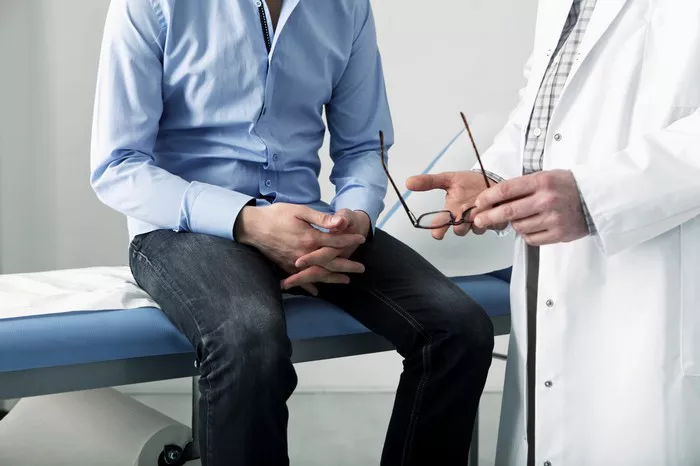Varicocele is a condition in which the veins inside the scrotum become enlarged and twisted. Similar to varicose veins in the legs, varicocele can cause discomfort and, in some cases, lead to fertility issues. There are three grades of varicocele, with grade 3 being the most severe. A grade 3 varicocele is characterized by visible and easily palpable enlarged veins that can lead to more noticeable symptoms and complications. Many men with this condition wonder if they can live with a grade 3 varicocele and whether treatment is necessary. This article explores the impact of a grade 3 varicocele, the symptoms, risks, and when it may be time to seek medical intervention.
Understanding Grade 3 Varicocele
Varicocele is classified into three grades based on the severity of the condition. Grade 1 varicocele is the mildest form, where the veins are not easily felt, while grade 2 is moderate, and the veins are detectable only during a physical exam. A grade 3 varicocele, however, is the most severe form, with visibly enlarged veins that can be seen and felt without the need for a physical exam.
Causes of Varicocele
Varicocele develops when the valves inside the veins of the scrotum become faulty. These valves are responsible for keeping blood flowing in one direction, back toward the heart. When they fail, blood can flow backward and pool in the veins. This causes the veins to swell and become enlarged. The condition is most common in men between the ages of 15 and 25 and typically develops over time.
Symptoms of Grade 3 Varicocele
A grade 3 varicocele can cause various symptoms that may impact daily life. Some of these symptoms include:
Visible Swelling
The most noticeable sign of a grade 3 varicocele is the visible swelling of the veins in the scrotum. The veins may appear as a tangled mass or “bag of worms.” This swelling is more noticeable when the individual is standing, as gravity increases the blood flow in the affected veins. Lying down may reduce the appearance of swelling as the blood flow returns to normal.
Pain and Discomfort
Many men with a grade 3 varicocele experience pain or discomfort in the scrotum. This pain is often described as a dull, aching sensation and may worsen with physical activity, such as exercise or prolonged standing. The pain may subside when lying down or resting.
Testicular Atrophy
Testicular shrinkage, also known as testicular atrophy, is another potential symptom of a grade 3 varicocele. The abnormal blood flow and increased temperature in the scrotum can damage the testicles over time, leading to a reduction in their size. This can affect sperm production and, in some cases, cause infertility.
Fertility Issues
One of the most concerning aspects of a grade 3 varicocele is its potential impact on fertility. The increased temperature in the scrotum caused by the enlarged veins can interfere with sperm production. Studies have shown that men with varicocele are more likely to experience lower sperm counts and reduced sperm quality. As a result, fertility problems may arise, making it more difficult to conceive.
Living with Grade 3 Varicocele
While a grade 3 varicocele can be troublesome, many men are able to live with the condition without immediate medical intervention. However, lifestyle adjustments and regular monitoring may be necessary to manage the symptoms.
Managing Symptoms
Wearing Supportive Underwear
For men with grade 3 varicocele, wearing supportive underwear or an athletic supporter can help alleviate discomfort. These garments help provide additional support to the scrotum, reducing the strain on the enlarged veins and minimizing pain.
Avoiding Prolonged Standing
Prolonged standing can increase the swelling and discomfort associated with a grade 3 varicocele. It may help to take regular breaks, sit down, or lie down during the day to allow the blood flow in the scrotum to normalize.
Applying Cold Compresses
Cold compresses or ice packs can help reduce swelling and provide relief from pain. Applying a cold compress to the scrotum for 10 to 15 minutes at a time can help alleviate discomfort and reduce inflammation.
Pain Management
Over-the-counter pain medications such as ibuprofen or acetaminophen can be used to manage mild pain or discomfort caused by the varicocele. However, it is important to use these medications as directed and consult with a doctor if the pain becomes more severe or persistent.
Risks of Living with Grade 3 Varicocele
While many men can live with a grade 3 varicocele, it is important to be aware of the potential risks associated with the condition. If left untreated, a varicocele can lead to complications that may affect overall health.
Worsening Pain
Over time, the pain and discomfort associated with a grade 3 varicocele may worsen. The enlarged veins may continue to grow, leading to increased pressure on the surrounding tissues and nerves. This can cause more severe and persistent pain, which may interfere with daily activities.
Infertility
One of the most significant risks of living with a grade 3 varicocele is the potential for infertility. The impaired blood flow and increased temperature in the scrotum can negatively affect sperm production. If a man is experiencing fertility issues or difficulty conceiving, the varicocele may be a contributing factor. In such cases, treatment may be necessary to improve sperm quality and increase the chances of conception.
Testicular Atrophy
Testicular atrophy, or shrinkage of the testicles, is another potential complication of a grade 3 varicocele. The abnormal blood flow can reduce the supply of oxygen and nutrients to the testicles, leading to damage over time. This can affect hormone production and sperm production, potentially resulting in low testosterone levels and reduced fertility.
Treatment Options for Grade 3 Varicocele
While some men may choose to live with a grade 3 varicocele, treatment options are available for those who experience severe symptoms or fertility problems.
Varicocelectomy
A varicocelectomy is a surgical procedure in which the enlarged veins are removed or tied off to redirect blood flow to healthier veins. This is the most common treatment for varicocele and is typically performed under general anesthesia. The surgery has a high success rate and can help alleviate pain, reduce swelling, and improve fertility in many cases.
Varicocele Embolization
Varicocele embolization is a less invasive procedure in which a small catheter is inserted into the veins to block the affected vessels. This is typically done under local anesthesia, and the recovery time is usually shorter than with traditional surgery. Embolization can help improve blood flow and reduce the size of the varicocele.
Hormonal Treatment
In some cases, hormonal treatment may be prescribed to help manage the symptoms of varicocele, especially if low testosterone levels or other hormonal imbalances are present. Hormone replacement therapy can help restore normal testosterone levels and alleviate some of the symptoms associated with varicocele.
Conclusion
Living with a grade 3 varicocele is possible for many men, but it comes with potential risks and complications. While some men can manage the condition with lifestyle changes and symptom relief techniques, others may experience worsening pain, fertility issues, or testicular atrophy. If symptoms become severe or fertility is affected, seeking medical treatment is advisable. Surgical options such as varicocelectomy or varicocele embolization can help address the underlying issues, alleviate pain, and improve fertility. Consulting with a healthcare provider is essential to determine the best course of action based on individual circumstances.
Related topics:
Is Varicocele Caused by Stress?




















